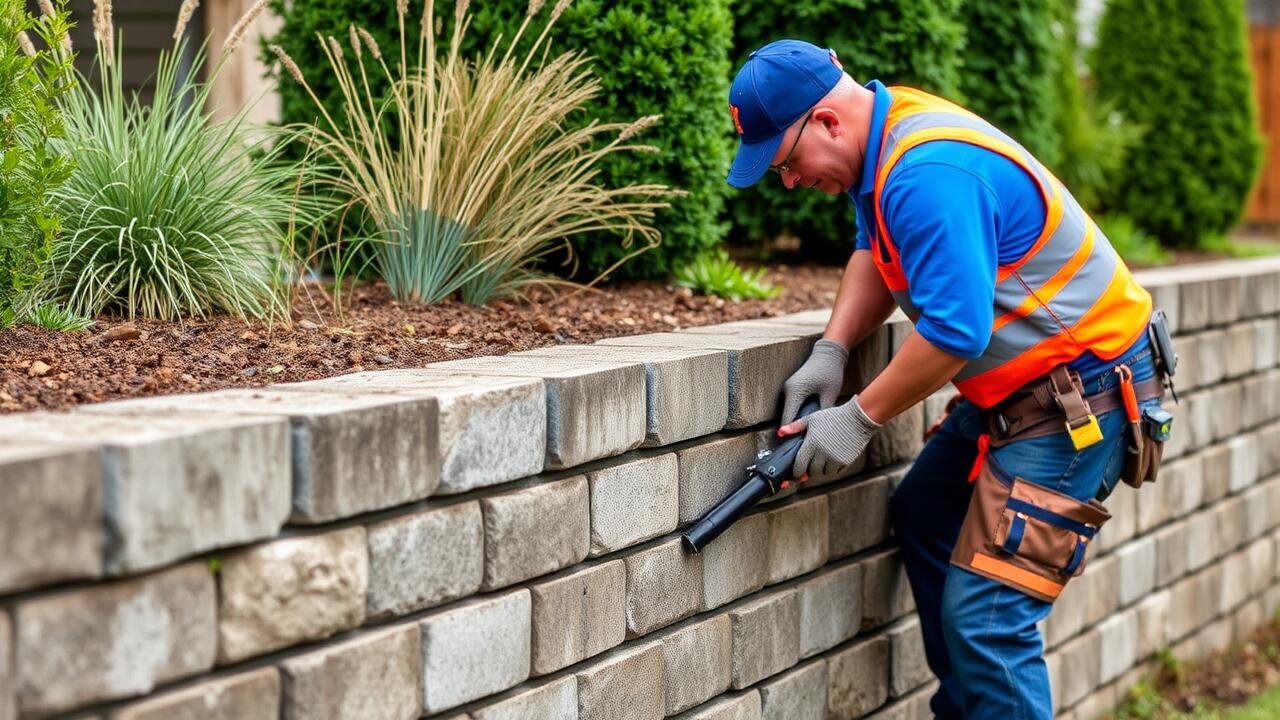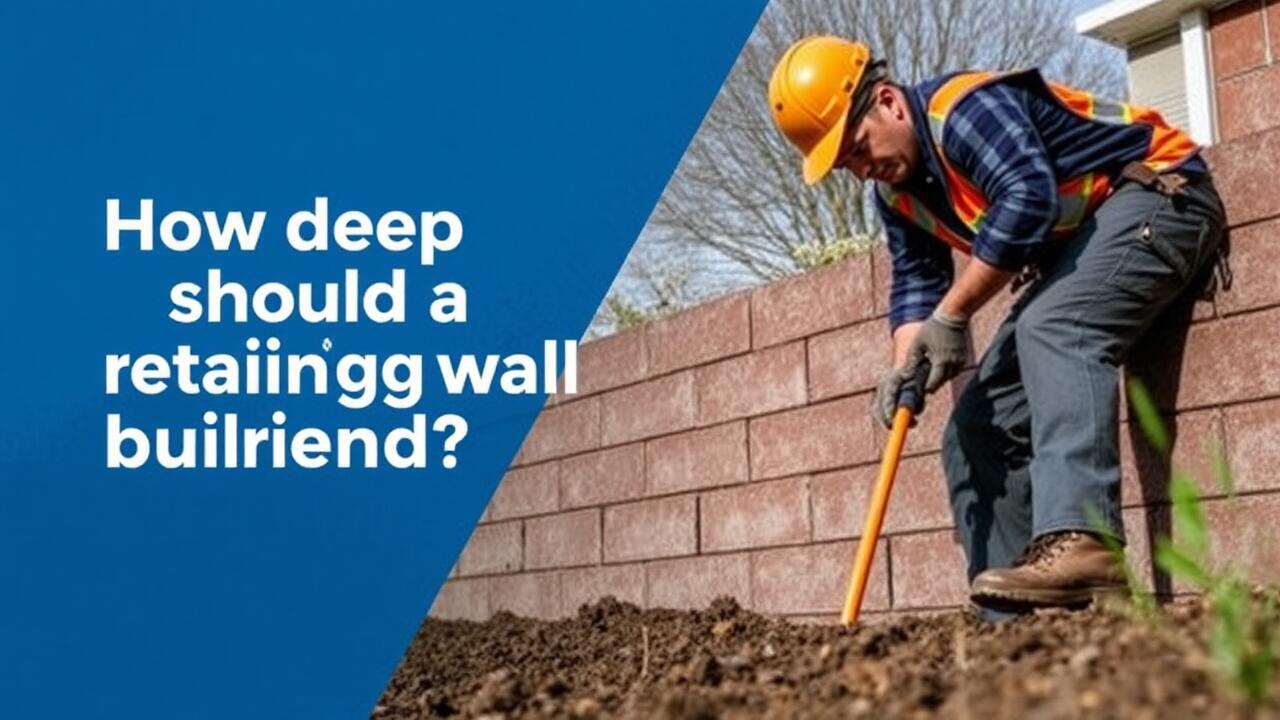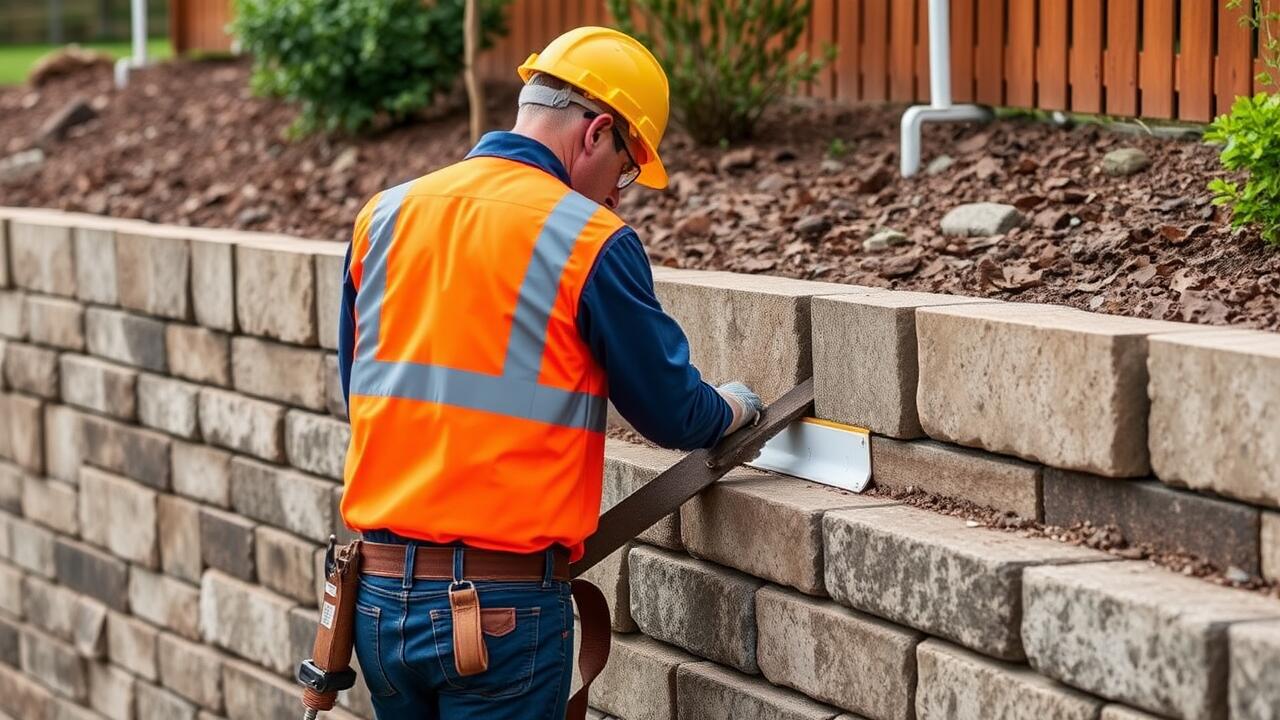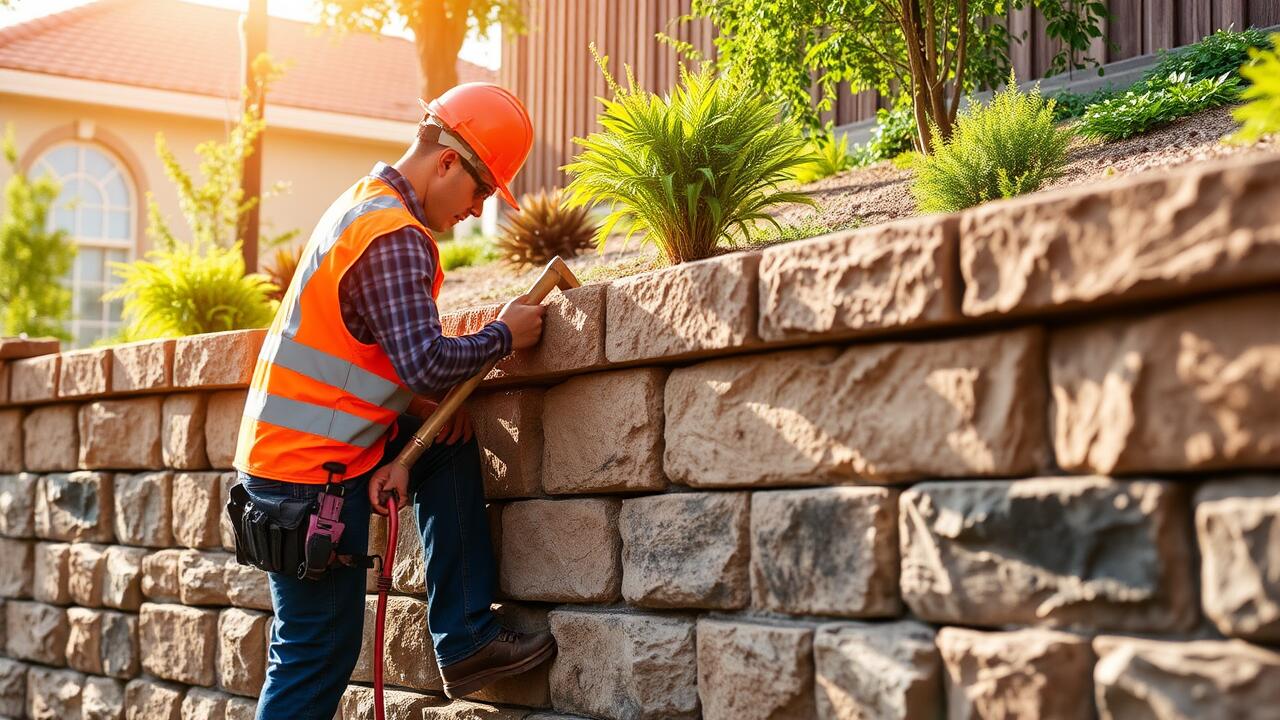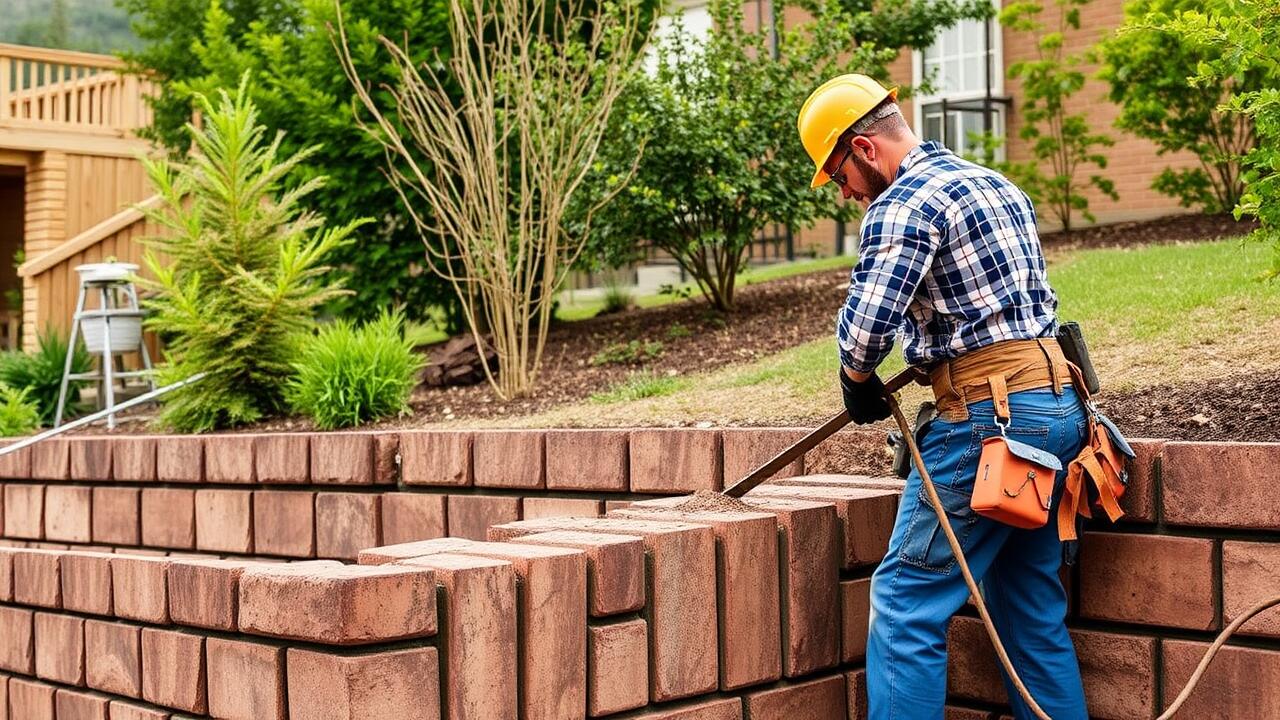
Additional Expenses to Consider
When planning your budget for retaining wall installation, it’s essential to account for additional expenses that may arise beyond the basic materials and labor costs. Site preparation often requires clearing vegetation, leveling the ground, or even removing existing structures, which can add significantly to your total expenditure. Additionally, if you live in an area where permits are necessary, the fees for obtaining the required approvals can further impact your overall costs. These unexpected expenses can catch homeowners off guard, making it crucial to include them in the initial budget.
Another factor to consider is the long-term maintenance of the retaining wall. Regular inspections, repairs, and potential drainage solutions may be needed to ensure the wall remains functional and aesthetically pleasing over time. Understanding these ongoing care costs can help in evaluating the total investment involved in retaining wall installation. Neglecting maintenance can lead to more significant issues and expenses down the line, reinforcing the importance of planning for these additional financial commitments.
Permit Fees and Site Preparation Costs
Before undertaking any retaining wall installation, it is crucial to check local regulations regarding permits. Many jurisdictions require a permit for significant landscaping changes, especially for structures over a certain height. The cost of permits can vary widely depending on the location and complexity of the project. Failure to secure the necessary permits can lead to fines or mandated removal of the structure, which can be costly in the long run.
Site preparation costs are another essential factor to consider when planning for a retaining wall installation. This phase might involve land clearing, grading, and ensuring proper drainage. Depending on the existing conditions, such as the type of soil or any obstacles like trees or boulders, the expenses for site preparation can increase. Effective site preparation is vital not just for the safety of the wall but also for its durability, thereby underscoring the importance of budgeting for these initial costs.
Maintenance Considerations and Their Impact on Pricing
When planning for Retaining Wall Installation, it’s crucial to factor in the long-term maintenance requirements associated with the structure. Regular upkeep can include checks for any signs of erosion, damage, or vegetation growth that might compromise the wall's integrity. The choice of materials can significantly influence these ongoing maintenance costs; for instance, natural stone may require less frequent upkeep compared to wood, which can rot or warp over time.
Further, considering a maintenance plan can affect the overall pricing. Homeowners should evaluate the initial expense against potential future costs arising from neglect or improper installation. A well-maintained retaining wall not only enhances the property's aesthetic but also prolongs its lifespan, ultimately providing better value. Understanding these dynamics can help gauge the total investment necessary for both immediate and future needs when undertaking Retaining Wall Installation.
Long-Term Care Costs
Long-term care costs for a Retaining Wall Installation can vary depending on the materials used and environmental factors. For instance, some materials require more frequent inspections and maintenance to ensure integrity over time. Neglecting to address these needs can lead to more significant problems later on, ultimately increasing costs. Budgeting for periodic maintenance, whether in the form of repairs or simply cleaning, is essential to prolonging the lifespan of the wall.
Additionally, factors such as drainage and soil erosion can impact long-term expenses. Poor drainage can lead to water buildup, potentially compromising the structure. Investing in proper drainage solutions during the initial installation can help mitigate future repair costs. This level of preparation is crucial, especially in areas prone to heavy rainfall or soil movement. Understanding these long-term care aspects will assist homeowners in making informed financial decisions regarding their retaining wall installation.
DIY vs. Hiring a Professional
When considering retaining wall installation, the decision to take on the project yourself or hire a professional can significantly impact both your experience and the final outcome. A DIY approach may save money upfront, appealing to those with some construction skills and access to necessary tools. However, the complexity of the project, including soil assessment and drainage management, might be more challenging than anticipated. Errors in installation could lead to future structural problems, resulting in higher costs down the line.
On the other hand, hiring a professional for retaining wall installation ensures expertise and compliance with local building codes. Professionals bring experience and specialized equipment, potentially leading to a more efficient and durable result. While labor costs can increase the overall budget, the long-term benefits, such as reduced maintenance and enhanced safety, often justify the investment. Evaluating your skills, budget, and project requirements will play a crucial role in making the best choice for your retaining wall project.
Pros and Cons of Each Approach
When considering whether to tackle retaining wall installation yourself or hire a professional, it's essential to weigh the benefits and drawbacks of each approach. DIY projects often offer significant cost savings since labor expenses are eliminated. Homeowners may enjoy a sense of accomplishment upon completion and have the flexibility to customize the project to their preferences. However, the required knowledge and skills can be substantial. Mistakes can lead to structural issues over time, potentially resulting in costly repairs.
On the other hand, hiring a professional for retaining wall installation provides expertise and experience that many homeowners lack. Professionals can assess site conditions accurately and ensure that construction meets local regulations. This approach minimizes the risk of errors, leading to a more durable and aesthetically pleasing result. Nonetheless, the downside is the higher upfront cost, and some homeowners may feel a loss of personal involvement in the project. Balancing expertise, cost, and personal investment can help determine the best route for your retaining wall needs.
FAQS
What factors should I consider when determining how much to charge for building a retaining wall?
When determining how much to charge, consider factors such as the size and height of the wall, materials used, permit fees, site preparation costs, labor, and any additional expenses related to maintenance.
Are permit fees necessary for building a retaining wall?
Yes, permit fees may be required depending on your local regulations and the size of the wall. It's important to check with your local government to determine if a permit is necessary and what the associated costs may be.
What are some long-term care costs associated with maintaining a retaining wall?
Long-term care costs may include regular inspections, repairs from settling or erosion, and vegetation management. These costs can impact the overall pricing when considering ongoing maintenance.
Should I build the retaining wall myself or hire a professional?
The decision to DIY or hire a professional depends on your skill level, the complexity of the project, and the time you have available. DIY can save money, but hiring a professional ensures quality workmanship and may save time.
How can I estimate the total cost of building a retaining wall?
To estimate the total cost, calculate the cost of materials, add labor costs if hiring a professional, include permit fees, and consider any additional expenses such as site preparation and ongoing maintenance. It’s also helpful to get quotes from contractors for comparison.

